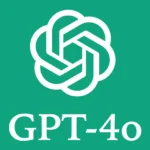AI for Nonprofits: Better Donor Engagement Strategies
Struggling to connect meaningfully with every donor while resources feel increasingly stretched? You’re not alone; giving to individuals saw a concerning 17.2% decrease recently, highlighting the need for smarter engagement .
TL;DR: AI offers powerful tools for nonprofits to deepen donor relationships in 2025. By analyzing data, automating tasks, and personalizing communication, AI helps nonprofits understand donor behavior, predict giving patterns, improve retention, and ultimately, boost fundraising efficiency and impact.
Table of Contents
What Is AI for Nonprofits Donor Engagement?
AI for nonprofit donor engagement involves using artificial intelligence technologies to enhance how organizations interact with, understand, and cultivate relationships with their supporters. This includes leveraging AI for tasks like analyzing donor data, personalizing communications, predicting future giving, and automating routine engagement workflows.
Featured Snippet Answer: AI for nonprofit donor engagement uses artificial intelligence to analyze supporter data, personalize outreach, predict giving likelihood, and automate communication. This helps nonprofits build stronger relationships, improve fundraising efficiency, and maximize their impact by understanding and responding to donor needs better.
Read also: No-Code AI Stacks: Zapier + Gumloop for Automated Reporting
Why It Matters in 2025
The fundraising landscape is constantly shifting. While overall giving trends show some growth, particularly from foundations [Source: Wild Apricot], connecting with individual donors requires more sophistication than ever. Resources are often tight, and competition for attention is fierce.
In 2025, AI isn’t just a novelty; it’s becoming essential for nonprofits seeking sustainable growth and impact. Here’s why:
- Hyper-Personalization at Scale: AI algorithms can analyze vast amounts of donor data (demographics, giving history, engagement patterns) to tailor communications. Instead of generic email blasts, you can send personalized appeals, impact updates, and thank-yous that resonate deeply with each donor’s specific interests and motivations.
- Predictive Insights: AI tools can forecast which donors are likely to give again, lapse, or upgrade their support. This allows fundraising teams to prioritize outreach, focusing efforts where they’ll have the greatest impact and proactively preventing donor churn.
- Efficiency and Automation: AI can automate time-consuming tasks like drafting initial email templates, segmenting donor lists, scheduling communications, and even analyzing responses. This frees up valuable staff time for high-touch relationship building and strategic planning.
- Enhanced Donor Experience: From AI-powered chatbots answering common questions instantly to personalized giving suggestions, AI improves the overall donor journey, making interactions smoother and more responsive.
Ignoring these advancements means potentially falling behind in donor retention and acquisition, key challenges identified for nonprofits heading into 2025 [Source: fundsforNGOs]. Leveraging AI helps bridge resource gaps and amplifies engagement efforts significantly.
Case Study: How ‘HopeConnect’ Boosted Giving with AI
Let’s look at a hypothetical (but realistic) example based on common AI capabilities:
HopeConnect, a mid-sized nonprofit focused on youth services, faced stagnant individual giving and a lean development team. They decided to implement an AI-powered CRM add-on.
The Challenge: Sending generic newsletters and appeals, low donor retention (around 45%), difficulty identifying major gift prospects early.
The AI Solution:
- Data Integration: Connected their existing donor database, website analytics, and email marketing platform to the AI tool.
- AI Analysis: The AI analyzed historical giving, event attendance, volunteer activity, email opens/clicks, and website interactions.
- Predictive Scoring: Generated scores predicting:
- Likelihood to give again.
- Potential major gift capacity.
- Risk of lapsing.
- Personalized Segmentation: Automatically created segments based on interests (e.g., mentoring programs, after-school activities) and predicted behavior.
- AI-Assisted Communication: Used generative AI to draft personalized email templates for different segments, suggesting specific programs or impact stories relevant to each group. The team reviewed and customized these drafts.
Read also: AI Newsletter Monetization: From 0 → $5k/mo
The Results (After 12 Months):
- Donor Retention: Increased from 45% to 58%.
- Average Gift Size: Rose by 15% due to better-timed and more relevant asks.
- Major Gift Identification: Identified 25% more qualified major gift prospects earlier in the cycle.
- Staff Time: Saved an estimated 10 hours per week on manual segmentation and email drafting.
HopeConnect’s success demonstrates how AI can translate data into actionable insights and personalized engagement, driving tangible fundraising results.
Pros & Cons of Using AI for Donor Engagement
| Feature | Pros | Cons |
|---|---|---|
| Personalization | Deeply tailored communication, increased relevance & connection. | Risk of “creepy” factor if overdone, requires good data hygiene. |
| Efficiency | Automates repetitive tasks (segmentation, drafting), frees up staff time for strategic work. | Initial setup and integration can be complex, potential job displacement concerns. |
| Insights | Predicts donor behavior (giving, lapsing), identifies hidden opportunities, data-driven decisions. | Accuracy depends heavily on data quality & volume, potential bias in algorithms if not monitored. |
| Scalability | Manages engagement for large donor bases effectively without proportional staff increase. | Cost of AI tools can be prohibitive for very small nonprofits, requires technical understanding. |
| Donor Experience | Faster responses (chatbots), relevant content, smoother interactions. | Lack of human touch for complex issues, potential for generic-sounding AI content if not edited. |
Pricing / ROI
AI tools for nonprofits range significantly in price. Some offer nonprofit discounts or specific tiers:
- CRM Add-ons (e.g., DonorSearch Ai, Virtuous AI features): Often integrated into existing CRM pricing or available as premium modules. Costs can range from hundreds to thousands per year depending on the platform and features.
- Standalone AI Platforms (e.g., Fundraise Up AI, Bloomerang): Pricing varies based on features, contacts, or usage. Many offer tiered plans. Salesforce provides discounts via Salesforce for Nonprofits.
- Generative AI Tools (ChatGPT, Claude, etc.): Freemium models available, with paid tiers (approx. $20/month/user) for advanced features and higher usage.
Last checked: May 2024
Calculating ROI:
Focus on:
- Increased Retention: Calculate the value of retained donors vs. the cost of acquiring new ones.
- Improved Average Gift Size: Track increases in giving from AI-targeted segments.
- Staff Time Savings: Quantify the value of hours saved on automated tasks.
- New Opportunities: Value of major gifts or grants identified through AI insights.
Compare these gains against the cost of the AI tools and implementation time. Often, the efficiency gains and increased fundraising revenue significantly outweigh the costs, especially for mid-to-large organizations.

How to Get Started with AI Donor Engagement
- Assess Your Needs & Goals: What specific engagement challenges do you want AI to solve? (e.g., improve retention, personalize outreach, identify major donors).
- Evaluate Your Data: Is your donor data clean, organized, and accessible? AI relies on good data. Start with improving data hygiene if needed. Check out resources from TechSoup for data management guidance.
- Research AI Tools: Look for tools that integrate with your existing CRM (like those mentioned by Donorbox) or standalone platforms designed for nonprofits (e.g., Virtuous, Bloomerang). Consider tools for:
- Predictive Analytics
- Personalization
- Automation (email, segmentation)
- Generative AI Content Assistance
- Start Small: Pilot an AI tool with a specific segment or task (e.g., predicting lapse risk for mid-level donors, personalizing a thank-you email campaign).
- Integrate & Train: Properly integrate the chosen tool with your systems. Train your team on how to use it effectively and interpret the insights.
- Monitor & Refine: Track results, measure ROI, and continuously refine your AI strategies based on performance.
Key Takeaways
- AI is crucial for nonprofits in 2025 to personalize engagement, improve efficiency, and gain predictive insights.
- Key applications include data analysis, personalized communication, predictive modeling, and task automation.
- Start with clear goals, clean data, and pilot projects before scaling AI initiatives.
- Focus on ROI by measuring improvements in retention, gift size, and staff efficiency.
- Choose tools that fit your budget, integrate with existing systems, and address specific engagement challenges.
Author Bio
GPTGist (AI Strategist Team @ GPTGist) focuses on helping organizations leverage AI for growth and impact. Connect with us on LinkedIn.
Frequently Asked Questions (FAQ)
1. What is the main benefit of using AI for nonprofit donor engagement?
The main benefit is the ability to personalize communication and engagement at scale. AI analyzes donor data to understand individual preferences and behaviors, allowing nonprofits to tailor outreach, build stronger relationships, and increase the likelihood of continued support.
2. Can small nonprofits afford AI tools for fundraising?
Yes, options exist for smaller nonprofits. Many AI capabilities are being built into existing affordable CRMs. Freemium generative AI tools can assist with content creation, and exploring open-source AI options can also be cost-effective. Start with specific, high-impact use cases.
3. Is AI going to replace fundraising staff?
No, AI is designed to augment, not replace, fundraising professionals. It automates repetitive tasks and provides insights, freeing up staff time for strategic planning, building deeper relationships with major donors, and focusing on creative aspects of fundraising that require a human touch.
4. What kind of data does AI need to work effectively for donor engagement?
AI effectiveness relies on quality data. Key data points include donor demographics, giving history (amount, frequency, campaigns), engagement history (event attendance, volunteer hours, email opens/clicks), communication preferences, and potentially wealth screening information.
5. How can nonprofits ensure ethical AI use in fundraising?
Ensure data privacy and security are paramount. Be transparent with donors about how data might be used (in privacy policies). Regularly audit AI algorithms for bias to ensure fair and equitable treatment of all donors. Prioritize using AI to enhance genuine relationships, not just automate asks.
Read also:
AI for Real-Time Market Analysis
Canva Magic Studio vs Traditional Designers





